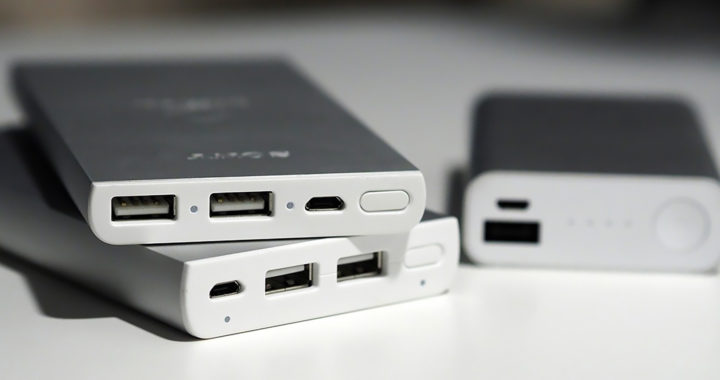Lithium polymer or LiPo batteries represent a specific type of rechargeable battery based on lithium-ion technology. They are fundamentally a subset of li-ion batteries and as such, they are more correctly referred to as lithium-ion batteries.
However, for brevity and easier communication to the general public, manufacturers and the mass media simply call them lithium polymer or LiPo, especially to draw a clearer distinction between the standard lithium-ion batteries.
Pros: Advantages of Lithium Polymer Batteries
Higher Specific Energy
Specific energy is simply energy per unit mass. It is a measure of how much energy a particular battery contains in comparison to its weight. Take note that it is also referred to as massic energy or gravimetric energy density.
A battery with high specific energy compared to its counterparts means that it can provide a higher level of energy without sacrificing its weight. It is essentially lighter. Li-ion batteries have higher specific energy than other types of rechargeable batteries.
Nevertheless, LiPo batteries have a higher specific energy density compared to other non-lithium ion rechargeable batteries such as alkaline batteries. They can also be designed and fabricated with a wider range of energy densities in accordance with different weights.
Flexible Form Factor
Because of the aforementioned higher specific energy and a higher degree of freedom in fabrication, another advantage of lithium polymer batteries is that they are ideal in applications in which weight is an important manufacturing consideration.
Examples of these applications include ultraportable computers or ultrabook laptops, smartphones and tablet computers, lightweight electric vehicles, and radio-controlled aircraft or unmanned aerial vehicles such as drones.
Remember that LiPo batteries can be produced in varieties of shapes and sizes compared to lithium-ion batteries. Hence, this is the reason why they have become an ideal power storage solution for mid-range to flagship consumer electronic devices.
Better Safety Performance
Lithium-ion technology is susceptible to explosions. Note that this is especially true for traditional lithium-ion batteries. Several cases have been publicized and documented in the media, including the infamous Samsung Galaxy Note 7 scandal in 2017.
However, while LiPo batteries are prone to an explosion due to overheating and overcharging, they are generally safer. They differ from traditional li-ion batteries because they use a solid, porous, or gel-like polymer electrolyte instead of a liquid electrolyte.
The polymer electrolyte does not explode due to gas built-up and leaks in case of excessive heat. They simply swell or expand in size. The absence of leakage also means that the electronic components of a particular device are safe from battery issues.
Longer Lifespan and Reliability
Another advantage of lithium-ion batteries is that they have low self-discharge and do not lose their charging capacity as fast as their traditional li-ion counterparts. Lithium-ion batteries are inherently unstable and suffer from aging.
Because of their durability feats, they usually have a longer lifespan and are more reliable. However, note that technologies behind standard li-ion batteries and the overall lithium-ion technology have been improving over the years to make them more durable.
Cons: Advantages of Lithium Polymer Batteries
Advantages of Li-Ion Batteries
The general difference between lithium polymer and lithium-ion batteries is the characteristic of the electrolyte used. Li-ion batteries use a liquid-based electrolyte. On the other hand, the electrolyte used in LiPo batteries is either solid, porous, or gel-like.
It is worth mentioning that despite the advantages of LiPo batteries, they have drawbacks compared to Li-ion batteries. For starters, they have low charge-discharge cycle than their standard li-ion counterparts. They essentially have a lower lifespan.
They also have lower energy density by default when compared to the default configuration of lithium-ion batteries. Of course, as mentioned, with advancements in technology, this disadvantage has been managed if not completely resolved.
Higher Manufacturing Cost
Another disadvantage of LiPo batteries, especially when compared to standard lithium-ion batteries and other rechargeable batteries, is that they are considerably more expensive to manufacture. The cost is around 20 to 30 percent higher.
The high cost is the reason why these batteries are often found in mid-range to high-tier consumer electronic devices. Li-ion batteries are still popular across low-range or entry-level devices such as smartphones and laptops.
Other Cons of Lithium Polymer
Remember that LiPo batteries are not perfect. Because they are still based on the general lithium-ion technology, they also share some of the disadvantages of li-ion batteries. These include safety concerns, sensitivity to high temperature, and aging effect.
In addition, while they are less prone to explode and leak, the swelling due to overheating and overcharging can still be problematic. A swollen battery can damage the physical form factor of an involved device and all of its internal hardware components.
FURTHER READINGS AND REFERENCES
- Kim, T., Song, W., Son, D.-Y., Ono, L. K., and Qi, Y. 2019. “Lithium-Ion Batteries: Outlook on Present, Future, and Hybridized Technologies.” Journal of Materials Chemistry A. 7(7): 2942-2964. DOI: 1039/c8ta10513h
- Long, L., Wang, S., Xiao, M., and Meng, Y. 2016. “Polymer Electrolytes for Lithium Polymer Batteries. Journal of Materials Chemistry A. 4(26): 10038-10069. DOI: 1039/c6ta02621d
- Manthiram, A. 2017. “An Outlook on Lithium Ion Battery Technology.” ACS Central Science. 3(10): 1063-1069. DOI: 1021/acscentsci.7b00288
